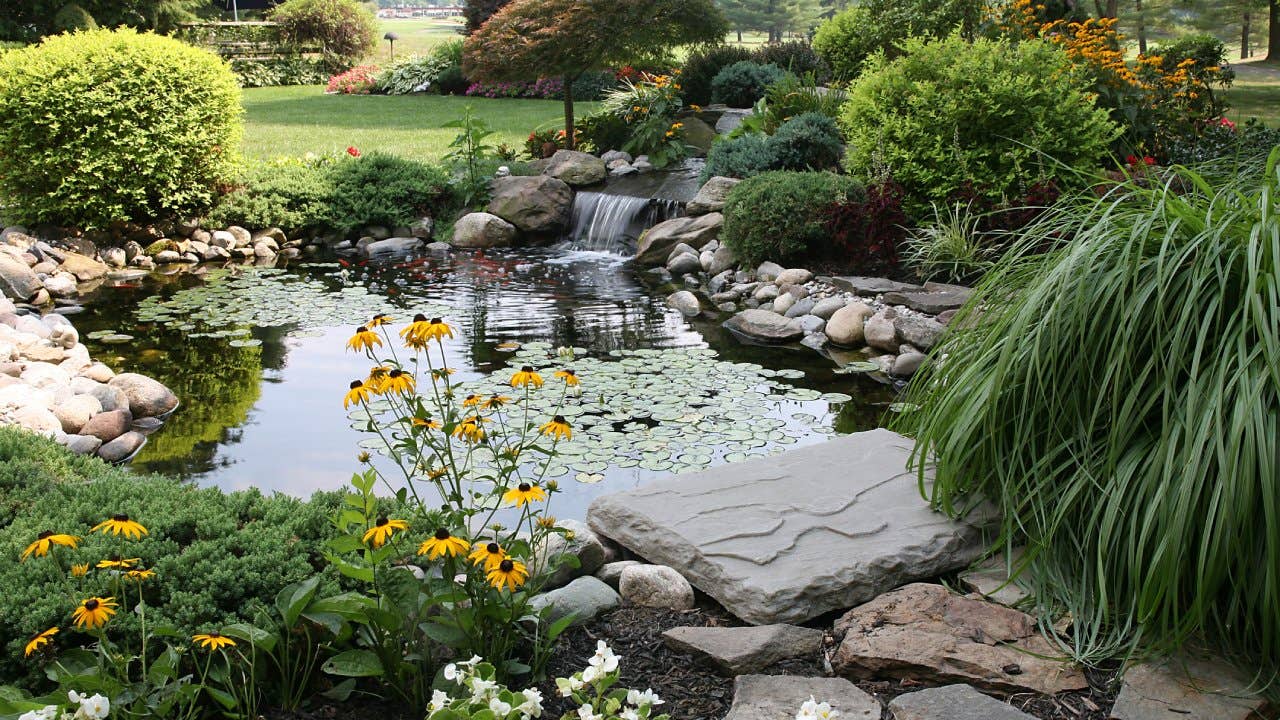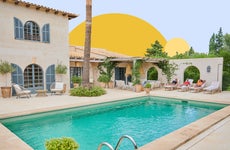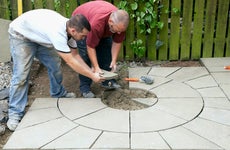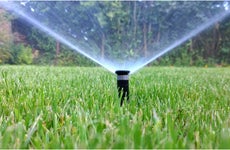Should you build a backyard pond?

The Bankrate promise
At Bankrate we strive to help you make smarter financial decisions. While we adhere to strict , this post may contain references to products from our partners. Here's an explanation for .
Croaking frogs and floating lily pads; gleaming koi fish and shimmering water. No doubt about it, ponds add picturesque dimension, visual interest and a sense of serenity to backyards in a way that few other landscaping elements do. But before you invest in creating your own little body of water — shelling out an average $1,200 to $5,500 to do so — be aware that building a pond comes with both pros and cons.
What is a pond?
A pond is a “standing body of water that’s recessed in the ground,” says Theresa Berrie, author of “How to Build a Backyard Wildlife Pond.” Although it conjures up an image of unspoiled, bucolic bliss, most ponds are actually man-made, she adds: “Few of us are fortunate enough to have a [naturally occurring] pond on our property.”
Man-made ponds fall into two basic types. While a traditional pond features a pump filter system, a natural pond does not, explains Robert Pavlis, author of “Building Natural Ponds.” With the latter, plants “clean” and shade the water, cutting down on the growth of algae.
Here’s a breakdown of the basic steps involved in creating both types of ponds:
- determine the shape of your pond and dig the hole
- add padding (such as a ½-inch-thick layer of newspaper)
- buy and add a liner
- add soil, rocks and water
- put rocks around the edge or otherwise cover the edge of the liner
- add plants
If your pond is natural, devise a planting strategy before you start digging, recommends Pavlis. Around the perimeter of the pond, build in planting shelves for irises, cattails and other water-loving plants. Also add floating plants (like water lilies) to cover one-third of the surface area of the water. And don’t stop at flora, think fauna too: koi and goldfish are common colorful additions to ponds.
If your pond is traditional, you’ll need to bring electricity to the area and install a pump filter system.
Advantages of backyard ponds
Ponds offer many advantages.
They add visual interest to your garden
“The pond becomes a focal point,” says Berrie. “Water features are fascinating to us humans. We can’t live underwater, which makes the pond the most mysterious part of our yard.”
Pavlis adds that ponds bring a whole new dimension to gardens and allow for the cultivation of water-loving plants.
They draw wildlife
“The main reason I wanted a backyard pond was so that I could fall asleep to the relaxing sound of frogs in the evening,” admits Berrie. By adding a pond, you’ll be able to observe wildlife you wouldn’t otherwise see, like frogs and dragonflies, she points out. Also expect to become popular with birds and small mammals, who’ll come to drink from your pond each day.
They help gardeners
Don’t fear the critters the pond attracts. “Frogs eat insects, so gardeners love having them around. They help keep the bad bugs in check, so plants stay healthier,” reveals Berrie. “Toads and tree frogs are especially helpful since they’re able to go farther away from the pond and eat the bad bugs in the more distant corners of the yard.”
They can hide street noise
“If your pond has a pump filter system, you can put in a waterfall or fountain,” says Pavlis. Not only do their splashes and gurgles create a relaxing ambiance, “their sounds can hide noise from cars, streets and people.”
They can cut down on mosquitoes
“Some people worry that having standing water will increase the number of mosquitoes in their yards,” says Berrie. “But actually, frogs and their tadpoles as well as dragonflies love to eat mosquitoes and mosquito larvae. So, they will decrease the mosquitoes you have.”
Downsides of backyard ponds
Ponds do have their downsides.
They require time and labor to build
“It’s work to build unless you hire someone,” says Pavlis, “and it’s a little more work than people might think.” Prepare for strenuous labor if you plan to DIY. For the hole, you’ll need to bring in digging equipment. Then, you’ll need to dispose of the soil.
They cost money to create
Other than digging the hole, the largest expense is often the liner, says Berrie, who put in her natural pond for about $300 (most of her budget went towards the liner). Expect to shell out $1 to $1.50 per square foot, says Pavlis.
If you’re going the traditional pond route, you’ll most likely spend more: $2.50 to $7.15 per square foot, according to Angi. Since these ponds require a pump to circulate the water, you’ll need to install an electrical line to the pond, says Berrie. Pavlis estimates the cost of a pump filter system alone ranges from $300 to thousands, depending on your pond’s size and how elaborate the system is. And then there is the cost of stocking it with plants and fish (and maybe a heating system to keep them warm in winter).
And of course, if you hire a professional landscaper or pond installer (yes, that’s a thing), there’s their wages: as much as $50 to $200 per hour, according to Fixr.com. Some pros may have flat rates, however.
They can pose a safety issue
“Kids love ponds, so they’ll head right for that water,” warns Pavlis. Some municipalities require that you fence in your pond, similar to regs for swimming pools — which is particularly wise if you have young kids or pets who don’t take well to water.
They require maintenance
“There’s more to maintaining a pond than a garden,” says Pavlis. “You can leave the garden for a month and it’s OK. A pond, depending on your style, may take more work.” That said, natural ponds require less maintenance than traditional ponds, he adds. With his natural pond, Pavlis merely tops off the water a couple of times a year.
If you go with a traditional pond, prepare to clean your pump about once a week and your waterfall filter (if you have one) roughly every six weeks. “It’s hardware, so things break and need to be replaced from time to time,” says Pavlis. If you have a fountain or waterfall (which can lead to faster water evaporation), you’ll likely need to top off your pond more frequently.
So there’ll be the cost of water, and possibly chemicals to keep the pond clean, and food for the fish. All told, you’ll spend $1,500 to $2,000 every year for maintenance, HomeAdvisor estimates.
Final word on building a pond
Ponds aren’t as effortless as they may appear. They are living things, or more strictly speaking, eco-systems. As such, they require upkeep, along with an initial investment of time and money.
Still, they can be a lovely bit of landscaping, one that adds time-honored charm, personality and peace to a patio, lawn or yard. After all, how many decks appear in Monet’s paintings?
Related Articles



